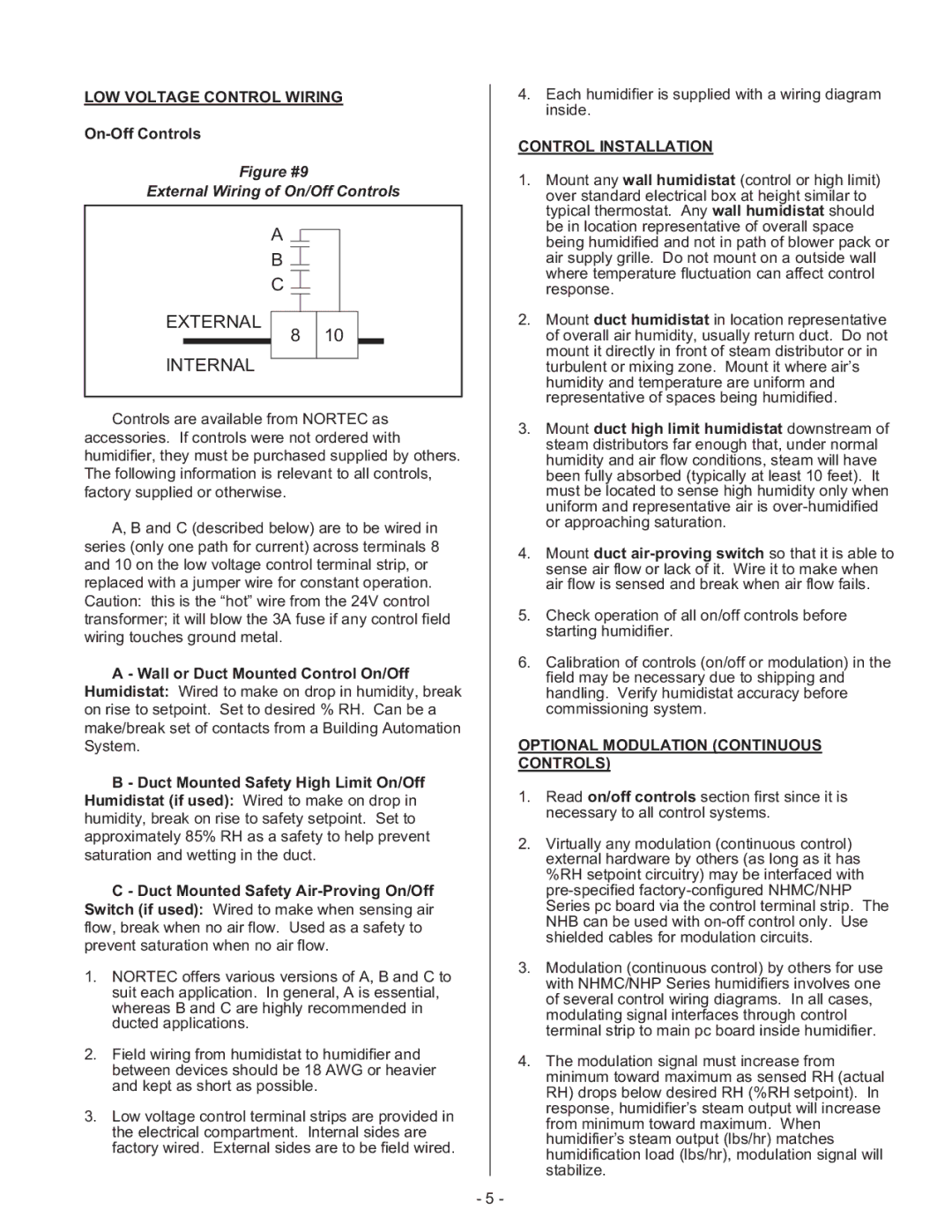132-3091 specifications
Nortec 132-3091 is a highly regarded humidity control system designed to meet the precise needs of various industries, including pharmaceutical, healthcare, laboratories, and food processing. This system stands out due to its advanced features and technologies, making it a reliable choice for maintaining optimal humidity levels.One of the main features of the Nortec 132-3091 is its energy-efficient operation. It incorporates innovative technologies that minimize energy consumption while delivering accurate moisture levels. The unit utilizes an intelligent control system that continuously monitors ambient conditions, adjusting output accordingly to achieve the desired humidity without excessive energy use.
Another key characteristic is its robust design, which emphasizes durability and reliability. The Nortec 132-3091 is built with high-quality materials and components, ensuring a long service life even in demanding environments. This attention to quality not only enhances performance but also reduces maintenance costs over time.
The system's versatility allows it to integrate seamlessly with various HVAC systems. It can operate as a standalone humidifier or be integrated into existing heating and cooling systems to enhance overall climate control. This flexibility makes it suitable for different applications and configurations.
User-friendly controls and an intuitive interface make the Nortec 132-3091 easy to operate and monitor. The digital display provides real-time readings of humidity levels, allowing for quick adjustments as needed. This feature is particularly beneficial in environments requiring strict humidity controls, such as cleanrooms and manufacturing processes.
Safety is a top priority with the Nortec 132-3091. The system includes multiple safety features, such as automatic shut-off and alarms, to prevent malfunction and protect sensitive materials and processes. The incorporation of advanced sensors ensures accurate readings and immediate feedback for real-time control.
Finally, the Nortec 132-3091 adheres to environmental standards and regulations, making it a sustainable choice for businesses looking to reduce their environmental footprint. Its eco-friendly refrigerants and low water consumption align with today’s sustainability goals, appealing to organizations committed to responsible operations.
In summary, the Nortec 132-3091 is a powerful and efficient humidification solution, combining advanced technology, durability, and user-friendly features. Its ability to deliver precise humidity control while minimizing energy usage makes it an excellent investment for various industries seeking optimal environmental conditions.

